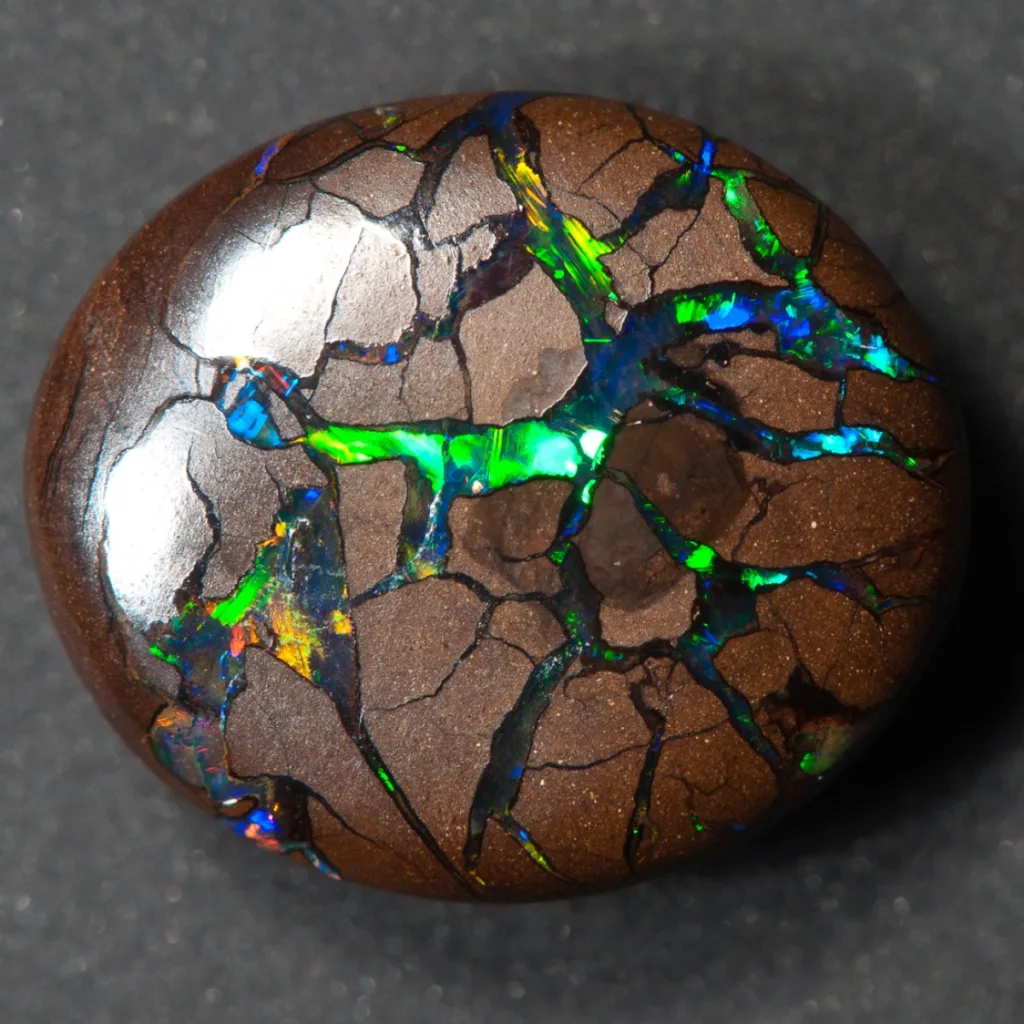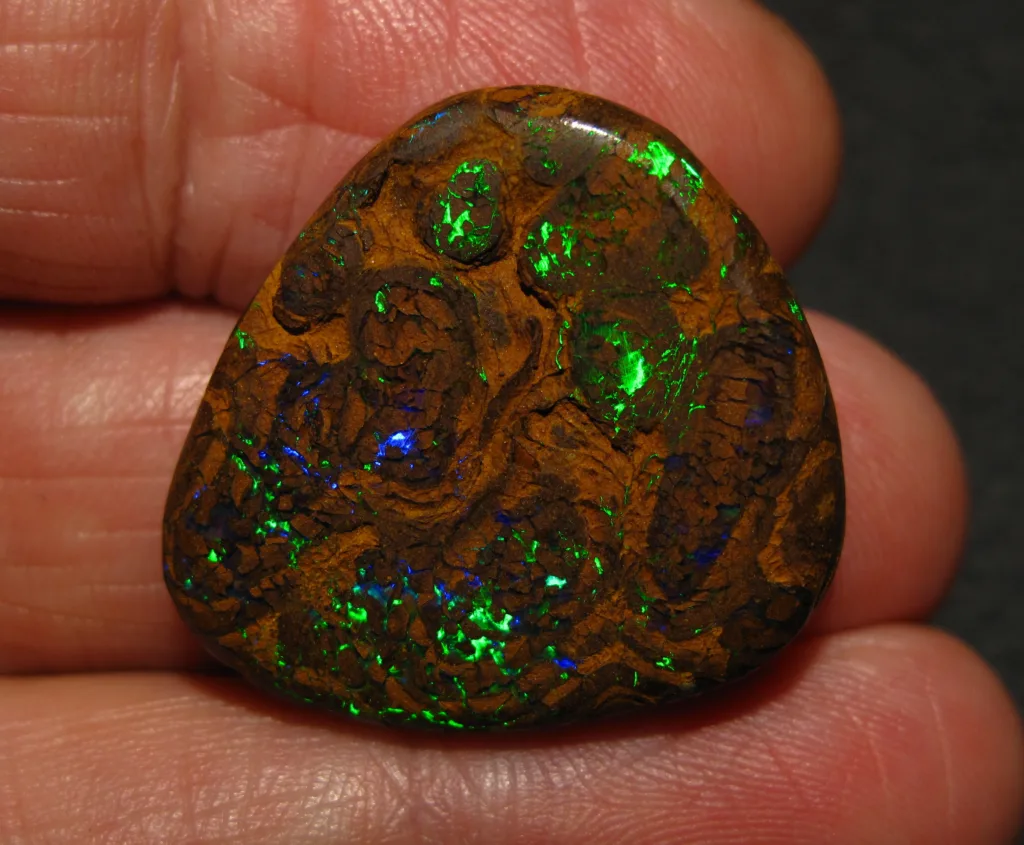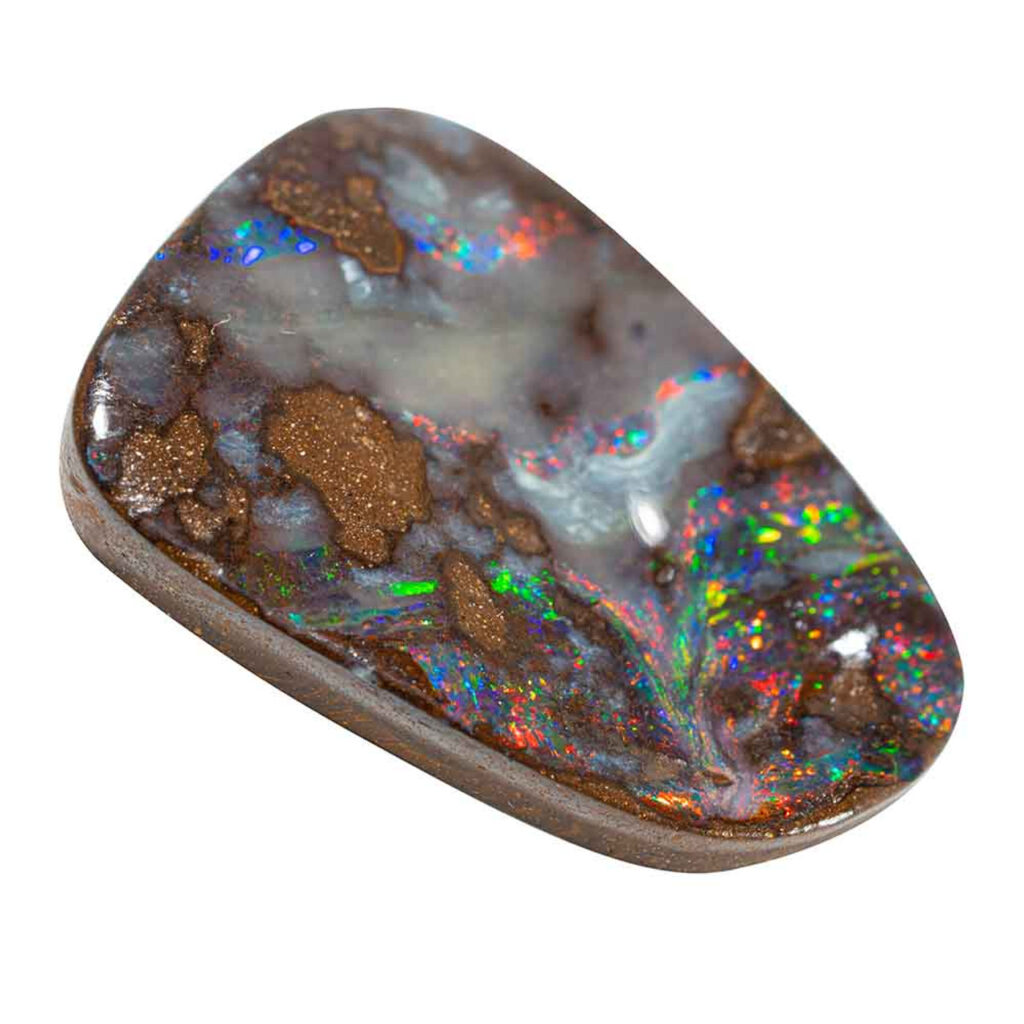Boulder opal is a unique and beautiful type of opal found primarily in Queensland, Australia. It is known for its vibrant colors, which can include flashes of blue, green, red, and yellow, similar to other opals. What makes boulder opal distinct is that the opal is naturally embedded within ironstone or sandstone, and the opal forms in the cracks or cavities of the host rock.

Boulder opal is valued for its durability because the ironstone backing gives it strength, unlike some other types of opal that are more fragile. The stone is often cut in a way that preserves both the opal and the ironstone, giving it a natural, earthy appearance that contrasts with the brilliant colors of the opal itself.
Collectors and jewelry makers appreciate boulder opal not only for its vibrant colors but also for the unique patterns that form as the opal interacts with the host rock, making each piece one-of-a-kind.
Discovery
Boulder opal was discovered in the mid-19th century in Queensland, Australia, during the Australian gold rush era. The opal deposits were found in large rock formations, where seams of opal had formed in the cracks and crevices of ironstone and sandstone. The discovery of these opals was significant because it was different from other known opal types, like white opals found in other parts of Australia.

The first commercial mining of boulder opal began around 1870. These opals were highly valued for their durability and the vibrant colors they exhibited when cut and polished. Early miners faced challenges extracting the opal due to the toughness of the host rock, which required considerable labor and effort.
Boulder opal quickly gained popularity among collectors and jewelers, especially for its distinctive appearance, with the opal still attached to the natural host rock. This type of opal is now primarily mined in the opal fields of Queensland, with towns like Winton and Quilpie becoming famous for boulder opal production.
Properties
Boulder opal has several unique properties that make it distinct and desirable:

- Color Play: Boulder opal is renowned for its vibrant colors, which can display a wide range of hues, including blue, green, red, and yellow. The color play occurs due to the arrangement of silica spheres in the opal.
- Durability: The ironstone backing provides added strength, making boulder opal more durable than other types of opal. This makes it less prone to cracking or chipping.
- Natural Patterns: Each piece of boulder opal features unique patterns and designs due to the natural formation process, with the opal embedded in the host rock. This adds to its aesthetic appeal.
- Transparency and Opacity: Boulder opal can vary in transparency, with some pieces being translucent and others more opaque, depending on how the opal formed within the ironstone.
- Hardness: On the Mohs scale, boulder opal typically ranks between 5.5 and 6.5, which means it is reasonably hard and suitable for use in jewelry.
- Specific Gravity: The specific gravity of boulder opal is generally around 2.1 to 2.3, reflecting its mineral composition.
- Refraction: Boulder opal exhibits unique optical characteristics, including a double refraction effect, which can enhance its color display.
These properties contribute to the popularity and value of boulder opal in jewelry and as a collectible gemstone.
Origins

Boulder opal originates primarily from the opal fields in Queensland, Australia. The deposits are typically found in areas rich in ironstone and sandstone, where silica-rich water has seeped through the rock over millions of years, depositing silica in the fractures and cavities.
The formation process of boulder opal involves:
- Silica Gel Formation: Over time, silica gel fills cracks and voids in the ironstone. This gel eventually hardens into opal.
- Mineralization: As the silica gel hardens, it can capture minerals from the surrounding environment, leading to the vibrant color play seen in boulder opal.
- Erosion: Natural erosion processes can expose the boulder opal, allowing miners to discover and extract it from the ironstone host rock.
The most significant boulder opal mining areas include towns like Winton, Quilpie, and Yowah, where miners continue to extract this unique gemstone. The combination of geological conditions, mineral content, and time has contributed to the rich variety of boulder opal found today.




































